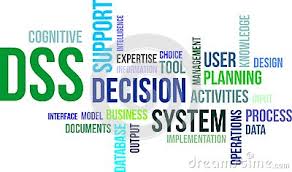DECISION SUPPORT SYSTEM- The art of right decision, and how to do it well everytime
Decision- Making is defined as the process of choosing a path for achieving the goals of a company from among various rational alternatives available. Decision Support System (DSS) is basically a system designed to facilitate the same.
It can be defined as an interactive computer system that gathers all the data and applies some analytical tools to it so as to arrive at a semi structured or unstructured decision. It helps the managers in the decision making process, i.e., it might not give the decision itself.
Characteristics of a DSS
- DSS not only responds to information needs but also provides sophisticated analytical tools to the users.
- It is aimed at top and middle level managers.
- It requires mass participation by employees from various departments.
- It is designed specifically for some decisions and not for general use.
- Helps in making interdependent or sequential decisions.
- Also provides intelligence, design, choice, and implementation.
- A variety of decision styles are supported.
- DSS is adaptive over time.
Components of a DSS
The components of DSS can be listed as below:
- DATA BASE: It is a pre requisite for developing DSS. It is the bank of all information (current as well as historical) acquired from different sources. It also consists of data from various functional areas like marketing, production, financial and human resource. It isn’t designed to create or update information but to use the data to help individuals to make decisions.
- MODEL BASE: It is a collection of mathematical and analytical models which are used by individuals. Each DSS is designed for a unique purpose and makes varying combinations of models based on this purpose.
- DSS SOFTWARE: It carries out the creation, storage and retrieval of models from the model base and combines them with the data in the database. It provides a friendly and graphic user interface. Eg- MS Excel, etc.
Types of DSS
DSS can be classified into the following categories:
- Status Inquiry System: Operational, management level, or middle level management decisions are provided by this system. For example, deciding the daily schedules of jobs to machines, etc.
- Data Analysis System: It provides comparative analysis and uses formulas or an algorithm. Example: cash flow analysis, inventory analysis, etc.
- Information Analysis System: This system provides a platform to analyse data and generate the information report. Example: sales analysis, accounts receivable systems, etc.
- Accounting System: In this system, records of accounting and financial information are kept (final account, accounts receivables, accounts payables, etc.). It keeps track of the overall business.
5. Model Based System: The simulation models or optimization models which help in decision-making are used infrequently which generate general guidelines for management.
Click here for government certification in Management





5 Comments. Leave new
good work
Interesting piece of information 🙂
GOOD ONE
Very well written!
Great work.